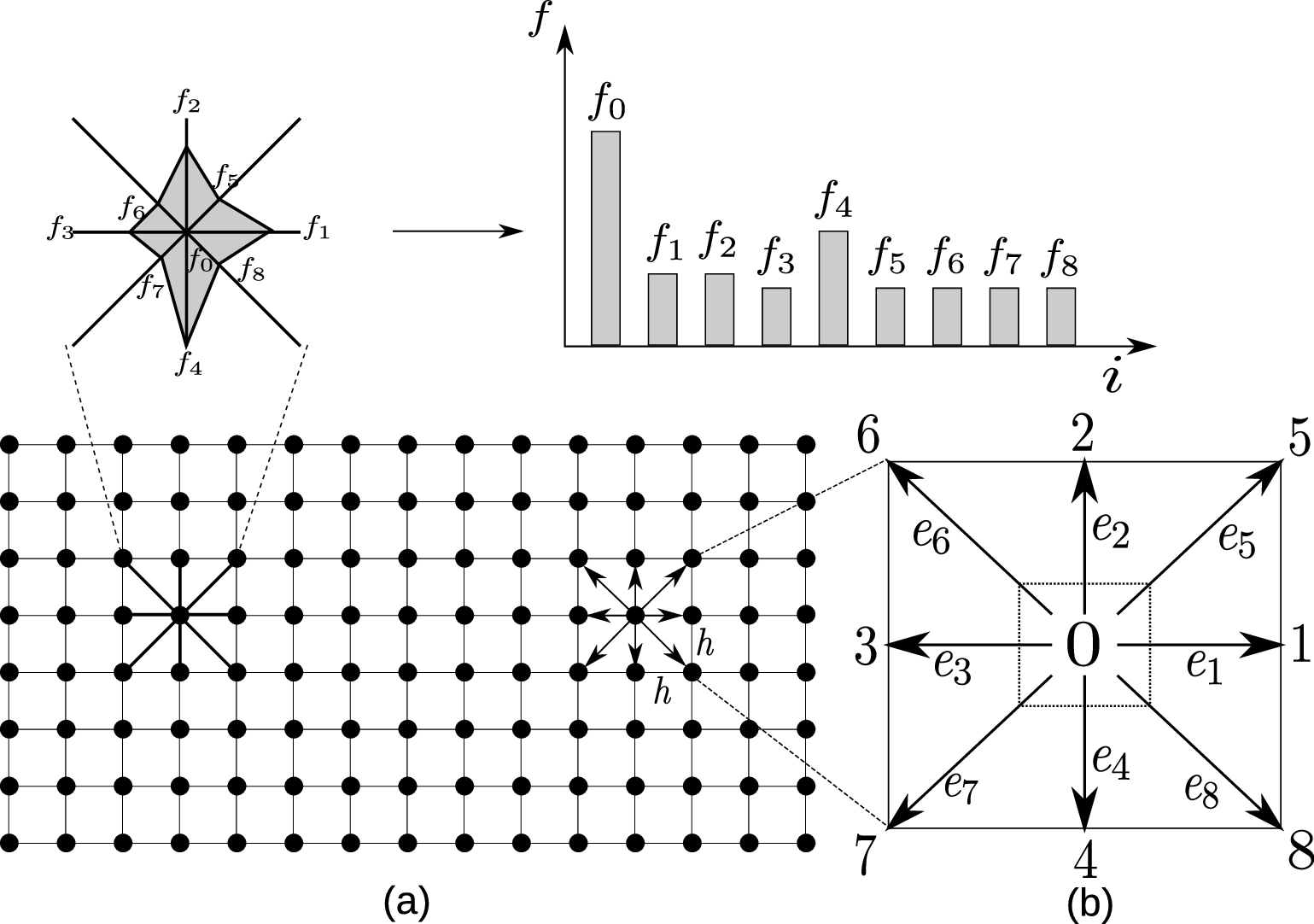Lattice Boltzmann Method
The Lattice Boltzmann equation Method (LBM) is an alternative approach to the classical Navier-Stokes solvers for fluid flow and works on an equidistant grid of cells, called lattice cells, which interact only with their direct neighbours (He & Luo, 1997). The fluid domain is divided into a rectangular grid or lattice, with the same spacing ‘h’ in both the x- and the y-directions, as shown in the figure. Multiple Relaxation Time (MRT) with Large-Eddy Simulations is used to model turbulent behaviour at high Reynolds number.

Lattice Boltzmann approach can accommodate large grain sizes and the interaction between the fluid and the moving grains can be modelled through relatively simple fluid – grain interface treatments. Further, employing the Discrete Element Method (DEM) to account for the grain – grain interaction naturally leads to a combined LB – DEM procedure (Kumar, Soga, & Delenne, 2012). The Eulerian nature of the LBM formulation, together with the common explicit time step scheme of both LBM and DEM makes this coupling strategy an efficient numerical procedure for the simulation of grain – fluid systems.
Main features
- 2D Coupled LBM-DEM
- D2Q9 with Multiple Relaxation Time
- Large Eddy Simulations for turbulence modelling
Code
-
The 2D version of the LBM-DEM code is now available at GitHub
-
The docker image of the LBM code is available at DockerHub
Simulations
Team
Publications
Archived version of our LBM-DEM publications can be found at Zenodo
Kumar, K. (2015). Multi-scale multiphase modelling of granular flows. PhD Thesis, University of Cambridge, UK.
Kumar, K., Soga, K., & Delenne, J. Y. (2014). Underwater granular flows down inclined planes. Geomechanics from Micro to Macro, 473.
Kumar, K., Soga, K., & Delenne, J. Y. (2012). Granular flows in fluid. Discrete element modelling of particulate media.